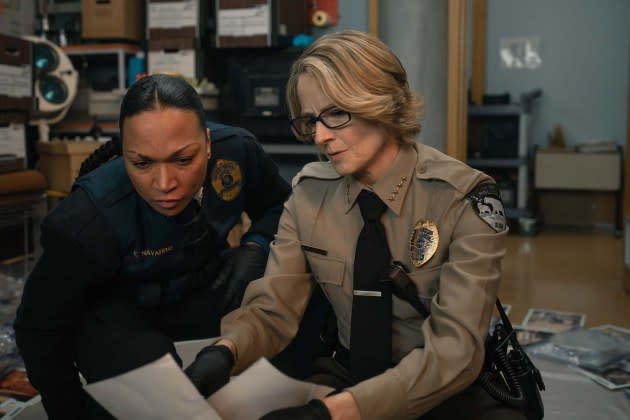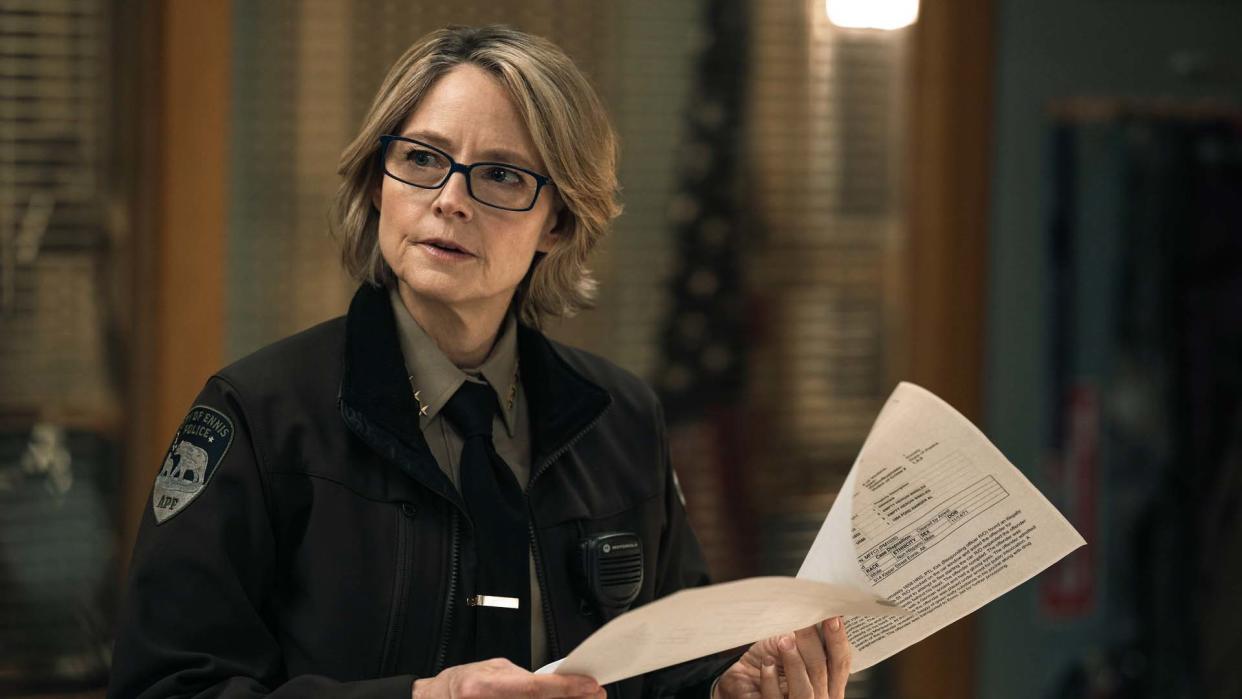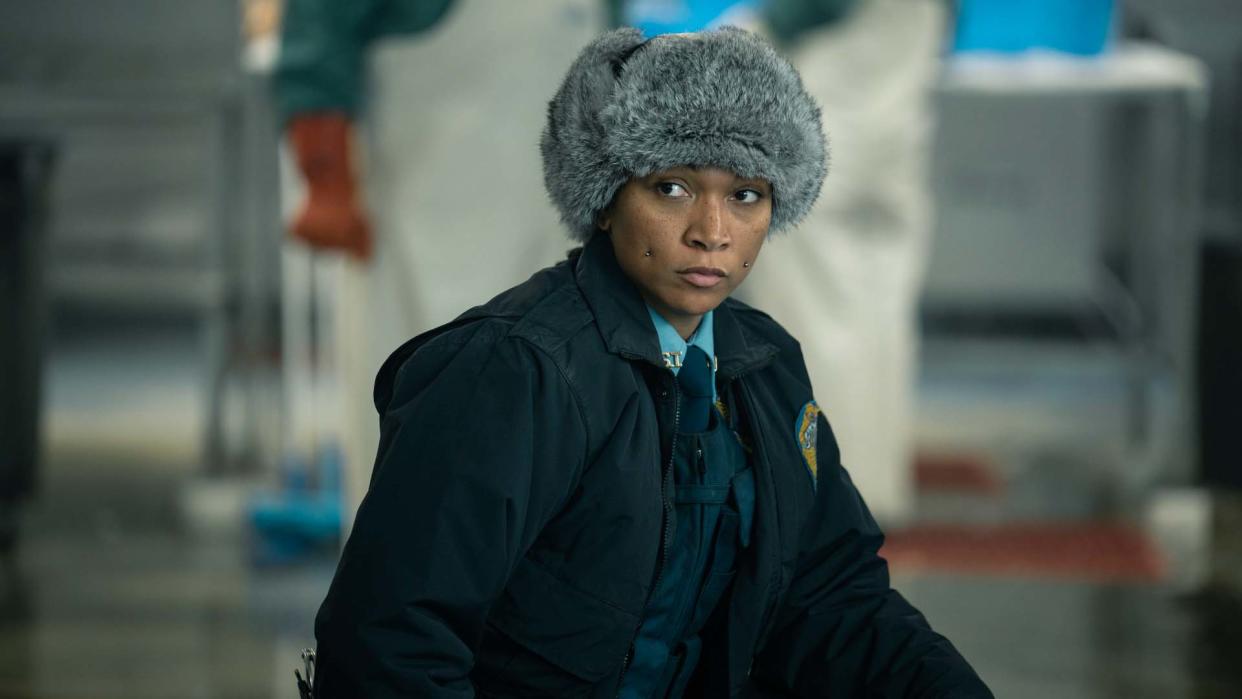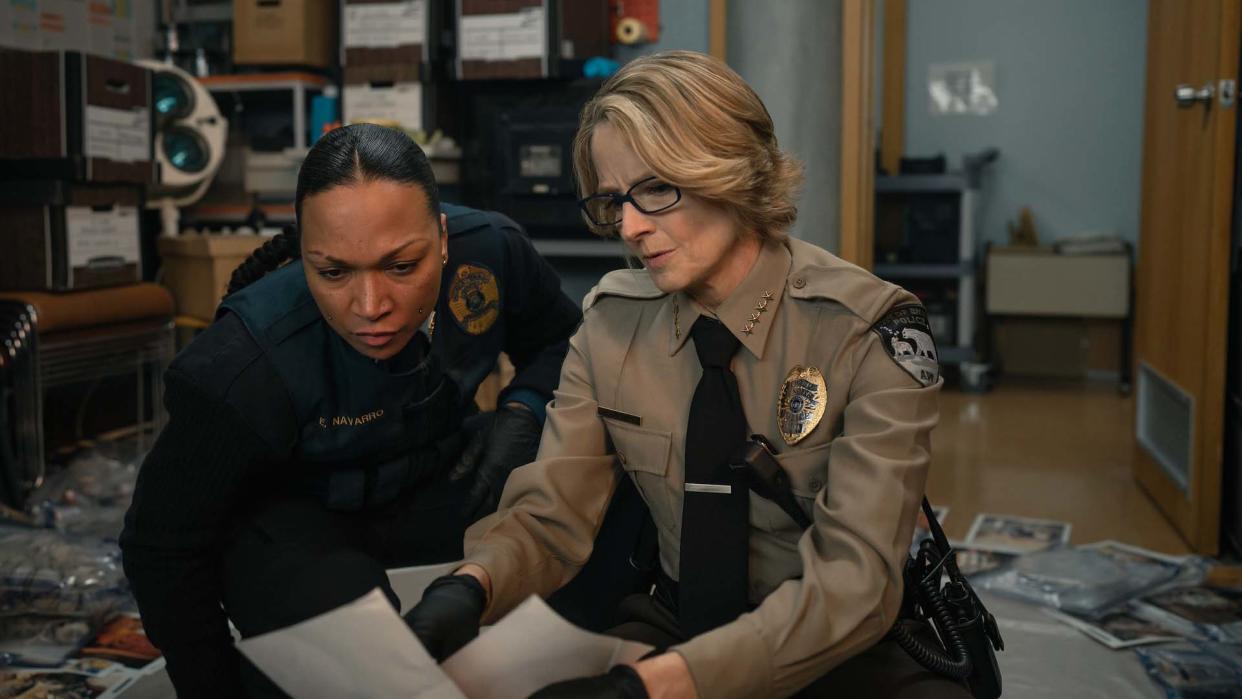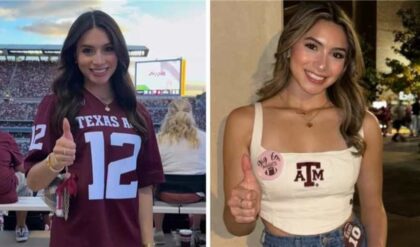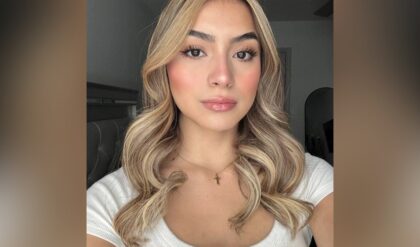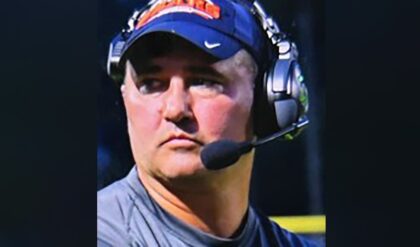HBO’s “True Detective” franchise had been off the air for five years, since its third season concluded in 2019. But all of that changed this year under the stewardship of Mexican filmmaker Issa López (“Tigers Are Not Afraid”), when the series came roaring back into the zeitgeist — with “True Detective: Night Country,” led by stars Jodie Foster and Kali Reis.
The murder mystery revolved around a central question: How did the scientists at the TSALAL research station in Ennis, Alaska end up as a frozen pile of dead naked men on the ice? A corpsicle, if you will! The answer — as uncovered by the true detectives Liz Danvers (Foster) and Evangeline Navarro (Reis) — took the women through a maze of questions, some of which seemed to have no logical explanation: but in the end, very much did. Through their investigative work, they healed themselves — and Ennis too.
For Variety’s Showrunners Sitdown With Kate Aurthur presented by FX, López answered all the burning questions the show inspires. We discussed her casting of Foster (perhaps inspired the “Silence of the Lambs” poster over López’s bed as a teenager), how she tied “Night Country” to the show’s first season, whether she thinks the Navarro character is still alive at the end of the series — and how she handled the trolls who attacked her and the show online during the rollout of the show. She also teased the fifth season of “True Detective,” which she will also run.
There are many spoilers for the whole season below, so stop reading now if you don’t want to see them!
You get a call from HBO saying, would you want to try to do a fourth season of “True Detective”? What was the first thing you did?
I would never expect to get this call! I did love that first season, it’s the reason that I took the job. And I missed that feeling of something horrible happening under the surface and in the corners of America that we don’t pay attention to, and with a whiff of the supernatural on old rites and rituals. And I wanted more of that.
And I remember that I had been thinking about the murder mystery, and I thought that putting it in the ice as a setting would be interesting. I was thinking of the Dyatlov Pass incident, which is a real event that happened in the Carpathian Mountains. Just a mention of “True Detective,” immediately was like: “OK, there’s two people investigating this. They should be women, because we already did it with men.” And it started to just shape up. So I was able to pitch something very quickly, and they loved it.
Why Alaska in particular?
Well, No. 1, when I thought about the Dyatlov Pass, it happened in the ice. Setting is everything in any good detective story, the really good ones from the “Baskervilles” to Dashiell Hammett to Los Angeles to the noir. “True Detective” had done such a brilliant job of creating the Southern Gothic in the Louisiana Bayou, and then they went to the Ozarks and then they went to Los Angeles. So what other corner of America could feel under seen in an interesting way? What angle of it? And Alaska felt perfect for a noir.
Did you picture Jodie Foster when you started writing?
Yeah, and I don’t think Jodie knows this — as a teenager, I used to cover the ceiling of my room, as you do when you’re a teenager, with movie posters and rock and roll posters. And the one right above my bed was that incredible poster of “The Silence of the Lambs,” with Clarice’s face in black and white. So basically the last thing I saw before started dreaming for a number of formative years in my life was that face.
That’s so scary!
It is!
In terms of creating the character of Evangeline Navarro, what were you picturing?
I was picturing Latina. Someone of Mexican origin whose family had crossed the border, or herself had crossed the border, and ended up joining the military — and then the police, as happens so often. But the more I learned about Alaska and the setting, and because one of the main events in the series is this disappearance of an Indigenous woman, I felt that it was completely unfair to, once again, as we’ve seen so often, to bring people from outside the place and outside the culture to solve the mystery. So I thought that it was wrong to do that, and I decided that instead of being a Latina or just a Latina, she was going to be also Inuit. But she had been removed from her culture, so she needed to relearn her language and reconnect with it.
I still didn’t let go of the Latina thing — her father was Dominican, to stay in touch with a little bit of me.
And how did you find Kali Reis?
The moment I knew that it was going to be a Native American actress, I knew that it was going to be a challenge, because the nature of “True Detective” is two big movie stars. And at that point, which is before “Killers of the Flower Moon,” we didn’t have a Lily Gladstone. And so whomever it was, even Lily Gladstone would have to be a newcomer. But that was very liberating. If we secured someone of the size of Jodie Foster, that gave us the freedom of bringing a completely fresh face.
Kali had done an incredible movie called “Catch the Fair One.” And she was incredible in it, but it was a tiny indie, and not seen en masse. But she had the strength and the presence, and she looked like the Navarro I had dreamed. So the moment I saw the first photograph of her, I was like, “That’s Navarro — that’s uncanny!” And when I told HBO, they were like, “Oh, but we love the idea, but it’s too big…” And I said, “Look at his photo.” And they saw it and they were, like me, “Oh, tell me more.” And then they saw the movie, and they saw the tape that I made with Kali, and they were on board.
Once you figured out that underlying the whole show was going to be this tension in Ennis, the fictional town that you created, between the Indigenous community and the mining company that’s poisoning all the natural resources, what did you do behind the scenes to bring people in to help you with that story?
Well, when I set out to do this, I had no idea about anything about Alaska, really. So first you start researching, as you do, where to place it — it had to be above the Arctic Circle. When I learned that Navarro was going to be Indigenous, I brought Inuit advisors to tell me where I was not doing right.
And one of the first things they said is people have always come to Alaska to take. They come to Alaska to take gold, to take oil, to take gas, to take, to take, to take, to take — and nothing ever returns to us. And I felt that that was a guideline that I could lead with for the series. So we had these advisors who went through every page, every line, every dialogue, and gave us a compass.
And then as I had more of the cast — who were as much as possibly Alaskan, an Inuit Alaskan, but if not Alaskan, then Native American and if not Inuit from Greenland, Inuit from Canada —each of those parts had to be a dialogue into, “How would an Indigenous character walk these steps, and work with them?”
And it was such a pleasure, because they were incredibly excited. They brought the food, they cooked for the scenes with food, they cooked themselves with ingredients that they consume and they hunt. And when they walked into the sets where we were producing Alaska in Iceland — because it was logistically impossible to shoot in Alaska — they were in awe of the fact that they felt at home, that they recognized the streets, and they recognized their apartments and the clothing and everything.
And you have written and directed many things, but as you said, never before a mystery.
Never.
So how did you figure out how to write a whodunit?
My favorite mystery writer of all times will forever be Arthur Conan Doyle. And when Arthur Conan Doyle was writing, there was no recipe. And he became the recipe, and he did it by writing it. So the first thing is get excited about a mystery, and the rest is just doing the little things in between. And that’s what I did.
The viewers have to work to figure out what the previous relationship is between Danvers and Navarro. How did you put that on the page?
A lot of the movies and TV that I was enjoying when I was writing this were things where all the events were not given at the beginning. And I think that’s one the big advantages of TV over cinema — the fact that you have the luxury of the expanse, the canvas is much larger, so you really can take your time. You don’t need to know everything in Episode 1 about the characters. Nor in Episode 2. You can learn things that are massive and essential in Episode 3 or 4.
And also it’s a great way for us to understand that these characters are unreliable narrators. They’re telling us things that are not true. They’re detailing events that are absolute bullshit! And we become, in a way, young Prior, trying to figure out what really happened with these two characters. And it is not until this final episode that we get the final truth of what happened between these two women.
And how did you come up with Annie K. as a character? The Indigenous woman who was murdered years before our story takes place.
Well, it’s interesting because my first way in into all of this was at Dyatlov Pass, and I thought, OK, so a bunch of people vanish from the face of the earth, and — like the bears in that fairy tale — they leave behind their soup and their shoes and their beds, and we have women walking into the empty house. And so I knew it was a woman, and I thought it was super interesting that the finding of the bodies was going to be male bodies. As a counterpart to so many shows, even “True Detective,” where it’s two men finding and exploring the bodies of brutalized women. So all of these men of science — because I thought that the perfect place to create this eerie feeling was an Arctic research station. So what happens if these women find dead men? Dead naked men, for once — for fun?!
Then I was like, OK so what could possibly have killed all these men? This feels and should look like a Biblical punishment to a terrible sin. And it felt that it had to be against a woman. It was just a matter of equilibrium.
How were you deciding to weave in references from the first season of “True Detective”?
I did it as organically as I could. I think that the main job of a storyteller is to get out of the way. So I knew it was going to be Alaska pretty early on. And then in revising “True Detective,” I realized that the father of Rust Cohle, the main character in Season 1, had lived and died in Alaska. So it would be weird to make a season of “True Detective” in Alaska and not acknowledge that connection. So I put it there.
And then I realized that there’s going to be a nether world, a connection with a level where the magical happens. And in Season 1 is Carcosa — in my season is whatever lies out there in the ice. And in Season 1, they have a symbol for when you are close to the events that pertain Carcosa. So why not use the same symbol? It would be weird to have a new different symbol for a new different nether world. So it’s just letting those associations happen as the story asks for them.
They’re not done in an attempt to win over fans of the first season. They’re done in an attempt to say, “This is happening in the same world. And there’s coherence between those.” So I was allowing for those connections to be clear for the audience.
Were there any that you wrote in, thought about — but they just didn’t work, so you ditched them?
Yes. Yes. Let me think. There had to be an evil corporation. There was a mine, there was capitalistic interests. And in the first season, there was this evil family that was very powerful in politics and in money. And I did make a connection between those two, but I thought that there could be a deeper connection, more of that evil family in this — and it had no place. So I just left it as the name.
In terms of the supernatural, which the first season flirted with and then backed away from — somewhat controversially — how did you want for it to factor into your story?
I don’t think that the first season shied away from it. I think that definitely Seasons 2 and 3 did completely turn their back on it. But the first season, the climax of the first season is Rust Cohle staring into the infinite swirl of Carcosa, and the Yellow King is right behind him. It’s huge! It’s a climax.
Or you can decide that his brain has been fried on drugss, and he’s just seeing this stuff, whatever you prefer. For me, Carcosa.
Filming in Iceland, for what I assume were entirely night shoots, what were the biggest challenges? And I assume you’re going to say it was cold as hell, but…
It was cold as fuck. It was cold. I was always joking about my tits were going to freeze off. They didn’t. Good news.
No, it was very cold. But the truth is, many, many days we were fighting the weather, not because of temperatures, but because of wind factor. The wind is no joke and you cannot travel on road because the wind will blow trucks and transport and people and everything.
Those winds are crazy. You cannot fly lights. And we were shooting by night. So we were completely dependent on the weather — like the characters. So those were the big challenges, but we were so blessed that the biggest storms fell on us on our turnaround days.
In terms of the visuals, you mentioned the corpsicle already — but there’s an element of horror to the show. Tell me about things like Annie K.’s tongue and the idea of the corpsicle. How did you come up with those ideas?
Well, I think it’s, again, the steady diet of horrendous things that I consumed my entire life. Those things that my dad and my friends were like, “You are sick.”
Like what, like what?
The “Silence of the Lambs” itself — I remember watching that movie, and it’s the first movie that I remember seeing that dead bodies look like dead bodies. That autopsy is freakish. And we hadn’t seen anything like that. David Lynch in “Blue Velvet,” forever tattooed in my consciousness, and I was probably 13 or 12 when I saw it. That first in incredible sequence of people watering the garden, and then we travel down, travel down, travel down, and find a human ear with ants walking inside of it. And the shock of this is what lies beneath is something that has always fed my vision.
John Hawkes, Finn Bennett and Jodie Foster have all described your approach as highly collaborative. Tell me about working with your actors that way.
That’s the best part. Really, the fun part of it all. You finish a script after four, five, six drafts and you go like, “This is it. This is how it’s going to work.” And it works on paper, but then the best part is to pick the right person, not only to look the part and say the lines, but because you have a feeling that they are going to understand what to do with that character, where to take them.
Each of them, once they got the part, we would start talking about the backstory. And I had ideas. I knew a little bit, but I would give that to them. And then they would go away and come back and say, “He had a girlfriend, she had a boyfriend, there was an abuse, there was a religious background, there was music, there was…” And we would build it, at first, separately. And I would have an hour a week of phone calls with Finn. Jodie, bless her, she couldn’t go for a couple of days without sending me 10 notes on the character. And then I would get together and just Zoom it.
And then we were all together. And what was fascinating is each of them has such a different methodology onto how to approach the character. Kali journaled as Navarro, and she had volumes, and John is obsessive with his notes. And Jodie had no notes because she had given me all of them already.
Right.
So we got there, and the fun of it is nothing was written on the stone. So we could play and we could then discuss, and — “I don’t believe it,” and “This is not how it would happen.” And then I would go like, “So let’s do it. Let’s stand up, and see what happened.”
And it is a little bit like being a kid again and getting together with your friends and going like, “OK, so it’s a pirate ship!” It’s I think the very expensive way I found to revive that feeling and do it together with your friends, and it’s going to end up being better than what you had.
So the finale — was it at the very start that you solved it for yourself? That this group of women who are of the town and in the town, but no one really notices or sees them — how did you come up with that idea? And did you know that they were the ones who… well, I guess they probably wouldn’t say killed the scientists, but kidnapped the scientists?
No, they did it to themselves.
Nature took over.
I knew exactly who had been — I didn’t know how. I had no idea, and I didn’t know how my detectives were going to figure it out. I knew the character of Hank had to die. I knew that these women would have to figuratively die and come on the other side to be able to live, because they’re carrying their own deaths inside them. But where the pieces would fall, I didn’t know. And that’s the joy and the horror of the writing — that feeling that you write yourself into a corner and then you better damn well get yourself out of there in a way that satisfies your audience.
And that’s always a fear. So yes, of course you have to write something so weird and so unexplainable that people want to know, that you yourself want to know — but then you have to answer.
So it took me some months to figure it out and find the print on the hatch that we had seen in Episode 1. But I did know from the beginning that that print was going to be there. Because even from my first draft, that woman was missing two fingers.
Where did you know you wanted Danvers to be at the end of the series?
I mean, I’m not saying for a second that Danvers now is a good wise soul and nothing affects her. You know, Danvers is Danvers — she’s going to die an asshole. There’s nothing to do. There’s no cure for that one. But she’s an asshole that is more in touch with herself.
true detective
In the interview sequence that ends the series where we see Danvers is being deposed or just interrogated. How did you come up with that device as a way to really bring some of those answers into the series?
Well, it is tough to go to do the thing that movies do so well sometimes of, “Six years later… Blah, blah, blah, was never seen again” — that text at the end of the movies. But I didn’t want to do that. I don’t think it works on TV. And I always loved the challenge of, is there a way to see this instead of say it. Like, how did she get away from the fact that she’s the one that picked up Otis from the place, and that she didn’t end up implicated in his dead, or what really happened with the bodies or…
So it was beautifully there from the beginning. What they have in the first season of “True Detective” is the device of the character explaining shit to the camera — because it’s an interview. And the beauty of it is, even though I had never used it in the season, it is a device of the series. So I just went to it.
Where did you want to take Navarro, from the beginning of the story to the end?
Well, I wanted her to stop running away from the things that called her to the ice and to the night, because instead of escaping those ghosts, her opening up to them allows for her to receive the part of herself she’s missing, which is her identity and her name, her Indigenous name. So she just opens up, instead of being afraid. And she says it in Episode 6, she said, “I feel a lot like Clark holding onto the hatch, when I shouldn’t be afraid of the thing trying to open it.” So to let it embrace her — all these women that she’s lost are there ready to embrace you, and give you the parts of yourself that you lost.
Do you think that Navarro is alive?
I think it’s up to you, really, truly. But truly, if you look at it the way that Navarro has already gone into the ice and has already followed those voices. The way she goes the second time is in peace, in light — I don’t think she’s dead. But I think that if you come to me and say she had this calling to let go and be with the women she lost, that’s OK too.
The final shot of the series is Danvers and Navarro in some beautiful place on the water. So they’re hanging out!
I think Navarro came for a good glass of whiskey. These women love each other, and because they went through hell together, they understand each other. And I think it’s beautiful that they get to hang.
As we wind down here, let’s do some rapid fire. HBO has commissioned you to do the fifth season of “True Detective.” Where are you in that process?
In the writing. And it’s a blast. It’s completely different. There’s different characters, different setting, different story — and I’m enjoying it like crazy.
Feel free to tell me everything about it, but will it once again revolve around two women?
I will not tell you that yet — yet. But it’s a completely different adventure. Let’s put it that way.
You’ve said that the stories of Danvers and Navarro are complete, but will anything from Season 4 carry over into Season 5, do you think?
I still can’t tell, but I think you will be pleasantly surprised. We’ll see.
Issa López
What was your No. 1 strategy in dealing with online trolls during the rollout of “True Detective: Night Country”?
Mute.
Mute!
Here’s the deal. I think we have a responsibility to contribute or not to the discourse online. And if the discourse is hatred — there’s people that dislike the series, and that’s fantastic. It’s TV! Not everyone is going to love it. There’s people that loved it, and there’s people that dislike it. That’s fantastically OK.
But there was a sector of people that came just because the change in the series between the first season and this was gender-based and was color-based. And you have two choices: Engage and amplify, or move on to the people that are connecting with what you’re trying to say and amplify that. So that’s what I did.
What was your reaction to “True Detective” creator Nic Pizzolatto kind of engaging with some of that fandom?
Well, listen, for me, what’s hard to process is the fact that you have a created something so powerful and so unique and so perennial. And then a new storyteller with a completely different view of the world is invited to take a shot. And it works! And people love it, and it’s a success.
And so suddenly I am part of something that is much bigger than me, and that will go on beyond me. And it’s such an exciting thing to pass a torch and to watch what happens with that. So for me, that’s a joy and that’s what I focus on.
Did you feel like he didn’t pass the torch to you?
Well, I had the torch, so…
What was the most important thing you learned from writing telenovelas early in your career?
Sit your butt and write the episode. It doesn’t matter how you feel, and it doesn’t matter, the constrictions or the conditions or the pay — make it good. Telenovelas are a tough discipline. You have to turn on an episode a day. The constrictions are many, but still, it has to be good. It has to be compelling. So it’s the best school.
What’s been your biggest career disappointment?
I think every filmmaker will tell you that a lot of times the movies that make you are the movies that you didn’t make. I think on average I’ve developed eight movies for each one I’ve made.
Wow. What’s something you still would like to do as a creator that you haven’t done yet?
Oh my God, that’s tough: theater.
Oh!
I say this, and I get a little panic, because I love theater like nothing on Earth. It’s such a specific discipline, and when it’s good, it’s the best thing in the world. So at some point I will.
